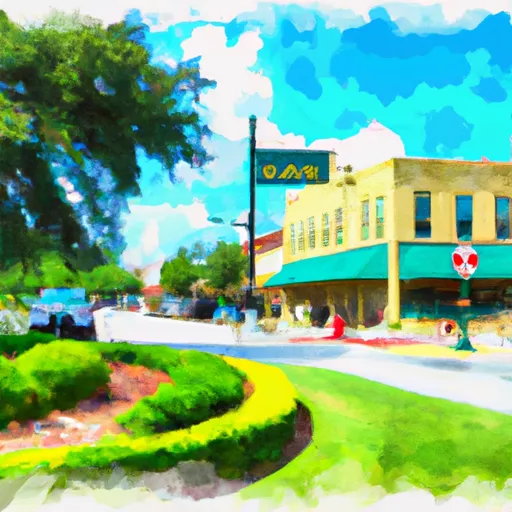-
 Snoflo Premium
Snoflo Premium
Get unlimited access to all our content
With no Ad interruptions! - Start Your Free Trial Login with existing account
Blountstown
Eden Index
Climate
7.3
•
Recreation
3.4
•
Community
2.0
•
Safeguard
4.6/10

Blountstown, Florida is a small town located in the panhandle region, known for its warm and humid subtropical climate. Summers are hot and rainy, with temperatures averaging in the high 80s to low 90s, while winters are mild with temperatures averaging in the 50s and 60s. The town is surrounded by water bodies like the Chipola River and Dead Lakes, making it a popular destination for fishing and water sports enthusiasts. Blountstown is also home to several state parks, including Torreya State Park and Florida Caverns State Park, which offer hiking, camping, and cave exploring opportunities. Hydrologically, the area is characterized by the Chipola River, which is known for its clear waters and diverse aquatic life.
What is the Eden Index?
The Snoflo Eden Index serves as a comprehensive rating system for regions, evaluating their desirability through a holistic assessment of climate health, outdoor recreation opportunities, and natural disaster risk, acknowledging the profound impact of these factors on livability and well-being.
Climate Health Indicator (CHI): 7.3
Blountstown receives approximately
1532mm of rain per year,
with humidity levels near 87%
and air temperatures averaging around
20°C.
Blountstown has a plant hardyness factor of
8, meaning
plants and agriculture in this region tend to thrive here all year round.
By considering the ideal temperature range, reliable water supplies, clean air, and stable seasonal rain or snowpacks, the Climate Health Indicator (CHI) underscores the significance of a healthy climate as the foundation for quality living.
A healthy climate is paramount for ensuring a high quality of life and livability in a region, fostering both physical well-being and environmental harmony. This can be characterized by ideal temperatures, reliable access to water supplies, clean air, and consistent seasonal rain or snowpacks.
Weather Forecast
Streamflow Conditions
Apalachicola
Area Rivers
Apalachicola
Snowpack Depths
Apalachicola
Reservoir Storage Capacity
Apalachicola
Groundwater Levels
Recreational Opportunity Index (ROI): 3.4
The Recreational Opportunity Index (ROI) recognizes the value of outdoor recreational options, such as parks, hiking trails, camping sites, and fishing spots, while acknowledging that climate plays a pivotal role in ensuring the comfort and consistency of these experiences.
Access to outdoor recreational opportunities, encompassing activities such as parks, hiking, camping, and fishing, is crucial for overall well-being, and the climate plays a pivotal role in enabling and enhancing these experiences, ensuring that individuals can engage in nature-based activities comfortably and consistently.
Camping Areas
| Campground | Campsites | Reservations | Toilets | Showers | Elevation |
|---|---|---|---|---|---|
| Florida Caverns State Park | None | 144 ft | |||
| Three Rivers State Park | None | 180 ft | |||
| Dead Lakes State Rec Area | None | 23 ft | |||
| Camel Lake | None | 83 ft | |||
| Wright Lake | 36 | 23 ft | |||
| Hardridge Creek | None | 215 ft | |||
| River Junction - Lake Seminole | 16 | 199 ft | |||
| Torreya State Park | None | 263 ft | |||
| Cotton Landing | 10 | 14 ft | |||
| Hickory Landing | 20 | 14 ft |
Nearby Ski Areas
Catastrophe Safeguard Index (CSI):
The Catastrophe Safeguard Index (CSI) recognizes that natural disaster risk, encompassing floods, fires, hurricanes, and tornadoes, can drastically affect safety and the overall appeal of an area.
The level of natural disaster risk in a region significantly affects safety and the overall livability, with climate change amplifying these risks by potentially increasing the frequency and intensity of events like floods, fires, hurricanes, and tornadoes, thereby posing substantial challenges to community resilience and well-being.
Community Resilience Indicator (CRI): 2.0
The Community Resilience Indicator (CRI) recognizes that education, healthcare, and socioeconomics are crucial to the well-being of a region. The CRI acknowledges the profound impact of these elements on residents' overall quality of life. By evaluating educational resources, healthcare accessibility, and economic inclusivity, the index captures the essential aspects that contribute to a thriving community, fostering resident satisfaction, equity, and social cohesion.

